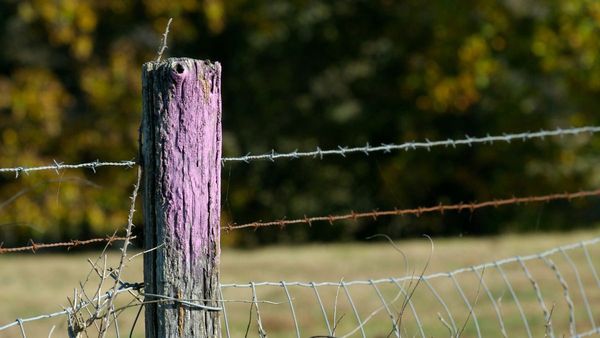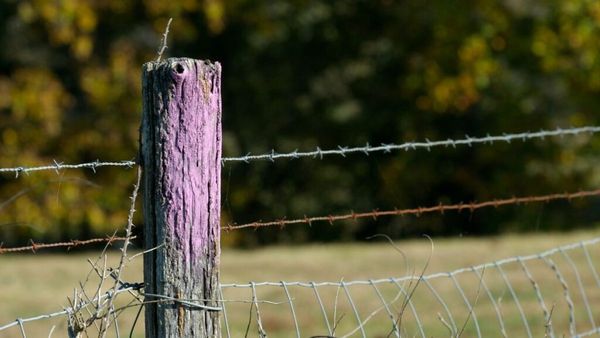
Did you know that if you ever come across a fence post or tree painted with a purple stripe, it means something important? It’s not just there to look pretty; it actually carries a crucial message that you should know, especially if you’re near someone’s property.
Instead of using traditional “No Trespassing” signs, landowners in many states have started painting purple lines on trees or posts to keep intruders away. This method serves as a clear warning sign to stay off private land. Over time, signs can wear out and become hard to read, but the purple paint remains visible, making the message more effective. It’s also a gentler approach for trees than nailing or screwing signs onto them.
So why purple? Well, purple stands out in nature and catches attention, making it an ideal color choice. But it’s important to note that other states use different colors for the same purpose. For example, in Idaho and Montana, orange paint is used, while Maryland uses blue. Before marking your own property, make sure to familiarize yourself with the rules specific to your state.
When painting a fence post purple, it’s crucial to ensure that the stripe is visible. It should be placed three to five feet above the ground, about one inch wide, and eight inches long. Additionally, posts should be painted every hundred feet to clearly indicate the boundaries.
Arkansas was the pioneering state that implemented the “purple paint law” back in 1989, and since then, many others have followed suit. States like Alabama, Arizona, Florida, Texas, and more are likely to have purple markings as well.
So, if you happen to come across a purple-painted fence post or tree, remember that it’s a signal to stay away. Make sure to understand the local rules before venturing into new territories to avoid any penalties. Stay safe and respect private property!




